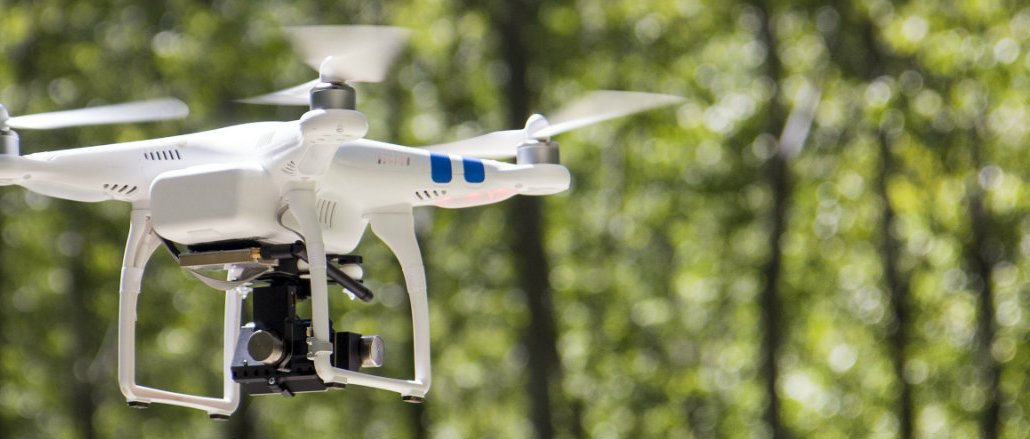
Picture this: You’re watching the U.S. Open on Fox, and you see a gorgeous flyover shot of the golf course. It’s in high definition and presents a bird’s-eye view of all the action — a visual that most people couldn’t get on their own.
It used to be that these shots were captured by cameramen or cameras stationed on blimps or helicopters. With the advent of aerial drones, coupled with the Federal Aviation Administration greenlighting their commercial use, expect more of these birds in the sky during sporting events — especially if it’s being broadcast by Fox Sports.
The sports media giant, which holds broadcast rights to the NFL, MLB, Nascar, pro golf and numerous action sports, is increasingly using aerial drones as part of its live sports broadcasts. Typically, the drones are used to capture both taped and live flyover footage. These are beauty shots that help viewers get a sense of the environment, and drones are proving to be a more effective than helicopters and blimps in capturing them, said Michael Davies, svp of field and technical operations at Fox Sports.
“There are some shots that you simply can’t get with conventional means,” said Davies. “You can get a lot lower and close to different structures and ground elements with drones.”
For instance, before last year’s FIFA Women’s World Cup in Vancouver, Fox Sports used aerial drones to shoot videos of its outdoor studio set in and around Coal Harbour. These videos, which would have been tough to capture using a helicopter, were later incorporated into the company’s live coverage of the tournament. In the past year, Fox Sports has used drones for other outdoor sports ranging from golf to auto-racing and skiing. It also occasionally uses drones for features and documentaries outside of live sports.
“There is a hell of a lot more you can do creatively when you’re not necessarily tasked with covering a sport, which can be more challenging,” said Davies.
While Fox Sports’ use of aerial drones has increased by “many folds” in the past year, there are still are still limits to the technology, said Davies. Football already has “sky-cams,” which can get viewers close to the action without the hassles of dealing with a noisy drone and public safety. Other major sports like baseball and basketball are either indoors and/or near city centers and large airports, which present their own logistical challenges. Using drones also requires a lot of approvals, not just from the FAA, but the various partners involved in any live sports broadcast including the league organization, local law enforcement and the venue. It’s a big reason why drones work well for outdoor sports like golf and skiing that offer more space to work with.
All of this work is overseen by Brad Cheney, Fox Sports’ director of technological operations. He’s part of Davies’ 12-person team that oversees all technical aspects of any Fox Sports production (the team also includes 50 freelancers on contract who help out on the field when necessary).
Cheney’s role is twofold: working with the Fox Sports production team on-site to figure out all the needs and challenges for the broadcast, including the possibility of using drones. The actual production is done by a third-party vendor — in most cases, a company called HeliVideo. These vendors are also crucial because they have blanket FAA certifications to use specific drone models for commercial purposes. It eliminates some of the hurdles that come with using drones.
“They’re certified helicopter pilots with years of flight experience and doing shoots for film and TV, so they get the production aspect,” said Cheney. “They know the safety issues and all of the concerns that come with using drones.”
Fox Sports has more plans for aerial drones in the future. For instance, it’s trying to marry drone footage with augmented reality, which Fox Sports has previously used to create features such as the glowing puck in hockey and the yellow line for football. With drones, it wants to develop features such as “visualized wind” for golf.
It all falls under the Fox Sports Lab label, which is the umbrella term for all of the different experiments Fox Sports is doing with emerging technology. Its work with NextVR to develop virtual reality experiences falls under this banner. So does its golf range finder, which required five different technology companies working together to create.
“You spend a lot of money for the right to broadcast certain things,” said Davies. “To be able to differentiate yourself by showing people something new or different from what they’re normally used to, it’s worth the investment for us.”
Image via Fotolia / tostphoto
More in Media

Here are the biggest moments in AI for publishers in 2025
Here are some of the moments that defined how publishers adapted to the AI era this year.

Digiday+ Research roundup: Gen Z news consumption and diversification in the DSP space were 2025’s top trends
As 2025 winds down, we rounded up the biggest trends of the year, based on the data that resonated the most with Digiday’s readers.

What publishers are wishing for this holiday season: End AI scraping and determine AI-powered audience value
Publishers want a fair, structured, regulated AI environment and they also want to define what the next decade of audience metrics looks like.





